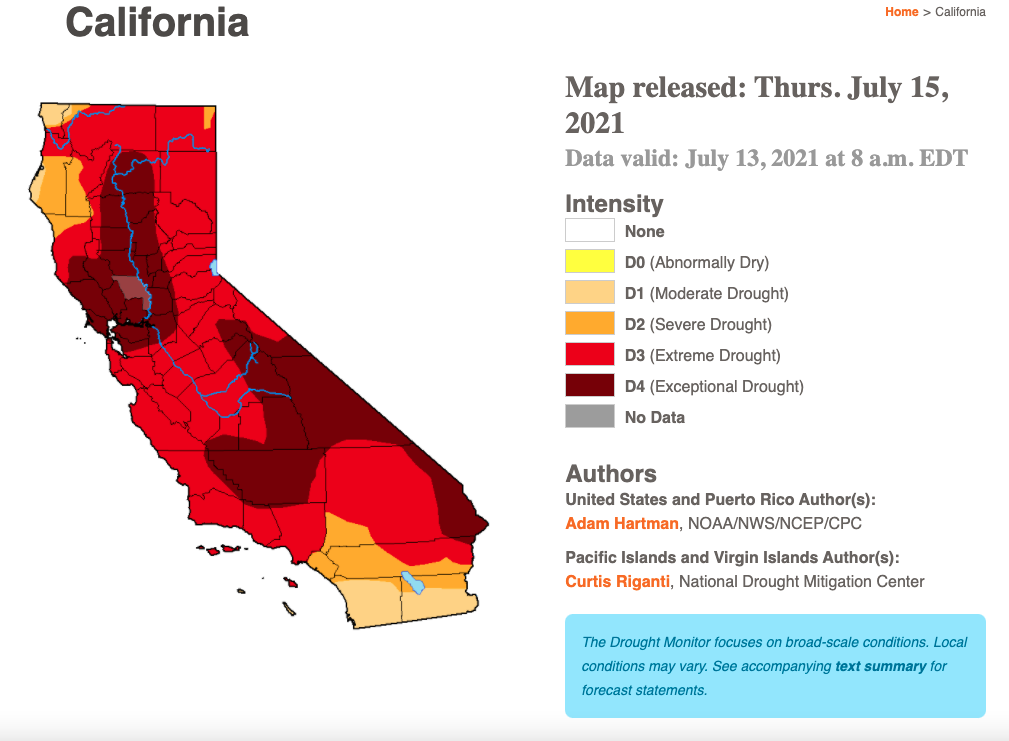BAKERSFIELD, Calif. (KERO) — Much of the state is in that bright red color which means extreme drought. If you take a look at Kern County, the area is almost entirely dark red. That color represents an exceptional drought which covers roughly 84 percent of the county. There is a small section of Eastern Kern that remains in the extreme drought.
With such a severe water shortage you might be wondering what impact this has on our agriculture industry and farmers.

Kern County is still in "Exceptional Drought" status according to the U.S. Drought Monitor. But with the county being one of the top vegetable-producing regions in the nation the drought is causing concern for local growers.
23ABC's Brianna Willis spoke with the president of the Kern County Farm Bureau who says this drought is unique from previous years because it's extra dry and causing farmers to produce fewer products.
“It is a historic drought. It is one of the worse ones we’ve seen for a few different reasons. Number one, it's very dry,” said Kern County Farm Bureau President John Chessher Moore.
Moore says as this drought continues, prices for agriculture will change.
“Another difference between this one and previous droughts is commodity prices are a little bit lower right now as well, so we have market pressures on top of environmental pressures.”
But Moore also says farmers are not going to be able to produce as many crops. And with the Central Valley being one of the leaders in crops Moore says everyone should be concerned with the repercussions we may face.
“Really, what we do in the United States specifically? We depend on the Central Valley for a stable and affordable food supply. Droughts like this one and the inability to move water efficiently through our current infrastructure is cause for concern.”
Moore adds with a decrease in supply -- and likely not a decrease in demand -- price inflations will likely be on the rise.
To make matters worse for farmers, as the drought continues throughout the western region of the United States local farmers say they are paying for water they aren’t getting and that this will affect their crops.
Moore explains that the way farmers pay for water on the state level is through a per acre assessment that typically goes on your property tax bill and it also comes from your water district. He says he believes the way the water is managed is a consistent failure from the state.
“This year, farmers will pay a $138 million bill for 980,000-acre-feet of water. Of that 980,000-acre-feet, people, the farmers, the areas that are serviced by the state water contract will only receive 5 percent of the water but they are paying for 100 percent of it.”
23ABC reached out to the Central Valley Project Water that manages the water for the state but have not heard back yet.
You can help by conserving water.
“Conserving water, even at my house, I conserve water. I use water on our farm to grow a product that’s going to feed thousands of people, but at my house, I conserve water pretty frequently,” said Moore.
Tamara Johnson from California Water Service (Cal Water) says to take part in conservation efforts every day.
“Just reducing their irrigation schedules by one day or ensuring that they’re not watering more than three days a week.”
And here in Bakersfield, it not only helps with water at home but with water for local farmers.
“Bakersfield residents, our system is dependent on service water supplies and groundwater supplies," said Johnson. "In order to ensure that we are able to reach sustainability into the future, it's important to consider conservation every single day.”
Moore also says that he believes it comes down to putting pressure on your local and federal politicians to help fix the water infrastructure problem throughout the region.



